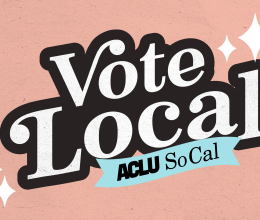
Many have suggested that once a jury has spoken, that’s it. That’s true legally – an acquittal marks the end of the criminal case – but we need not treat the verdict acquitting George Zimmerman in the tragic shooting of Trayvon Martin as if it were above discussion or debate.
The jury process is important in our democracy: It is at base an exercise in self-governance, and it should be promoted and protected. But veneration for the process should not blind us to outcomes we question. We may have pride in our democracy and our system of government, but we have never said, “Well, the President, or Congress, or the Supreme Court has spoken,” and just left it at that.
Though recognizing that the rule of law was upheld in this case, we can and should be able to question whether justice was in fact served and, more important, what the jury’s decision reflects about deeper societal issues implicated in this case. There’s much for us to question and debate about stand-your-ground laws, guns, concealed weapons and particularly race.
We must confront race, admit racism still exists and discuss how it plays out in our society – without being accused of playing the race card or engaging in racial demagoguery. The Supreme Court tells us repeatedly that we can’t become a color-blind society until we stop focusing on race, but we all know that to solve a problem you first have to admit you have one.
In thinking about race and racism, we need to understand the simple fact that bias can be, and often is, implicit. Some, including at least one juror, contend that race had nothing to do with Martin’s shooting. Will Saletan, for instance, concluded that Zimmerman made a series of mistakes, including “inferring that Martin was a burglar.” “Whatever its basis,” he writes, “the inference was false.”
The basis isn’t all that hard to discern: Starting in 2011, Zimmerman made several 911 calls about people he considered “suspicious” – almost all were young, black males. He reported a young, black child whom he estimated to be seven to nine years old – the police report fails to indicate what Zimmerman found suspicious about him. He then reported a black male he believed to be involved in recent burglaries, though it’s unclear what basis Zimmerman had for this belief. And again, he reported two black males he estimated to be between 20 and 30, because he didn’t recognize them or their car and was concerned about recent burglaries.
When Zimmerman called 911 to report Martin, Zimmerman said, “[T]here’s a real suspicious guy […] This guy looks like he is up to no good. It’s raining and he’s just walking around, looking about.” As the questioning proceeded, Zimmerman said, “These assholes[,] they always get away.”
This looks like race was right on the surface: There’s a clear pattern of people who Zimmerman perceived as suspicious, as not belonging in his neighborhood; and the pattern wouldn’t possibly hold if Zimmerman had been colorblind.
Whether Zimmerman did so consciously or unconsciously, it’s hard to avoid the conclusion that race played a part in his decision-making, influencing his thoughts, attitudes and actions towards young, black males. There’s a growing body of compelling research documenting just how powerful implicit or unconscious biases can be. And we must learn to recognize discrimination in its more subtle but no less insidious forms.
What’s more, we must acknowledge that our laws can be neutral on their face – colorblind in their wording – but discriminatory in their application or impact. Take Florida’s stand-your-ground law. The jury in this case was instructed that if Zimmerman was not engaged in unlawful activity and if he was attacked in a place where he had a right to be, “he had no duty to retreat and had the right to stand his ground […].”
Stand-your-ground laws neither explicitly mention race nor intentionally target racial groups. They fundamentally alter the traditional legal principles of self-defense by eliminating the duty of a person, when confronted with a possible threat to his or her safety in a public place, to retreat as much as is practicable before using deadly force in self-defense.
Yet stand-your-ground laws affect people of different races in significantly different ways. In states that have enacted these laws, “when white shooters kill black victims, 34 percent of the resulting homicides are deemed justifiable, while only three percent of deaths are ruled justifiable when the shooter is black and the victim is white.” The same legal principles, the same burden of proof beyond a reasonable doubt, yet the results are vastly different depending on the race of the victim and shooter.
We cannot ignore these kinds of disparities. They reveal that we value some human lives less than others. They reflect deep and longstanding divisions in our society that we ignore at our peril because they undermine and belie the one thing that ultimately binds us all – the belief that we are all created equal.
Hector Villagra is the Executive Director of the ACLU of Southern California. Follow @HectorSoCalACLU on Twitter. This entry was re-posted from the Huffington Post






